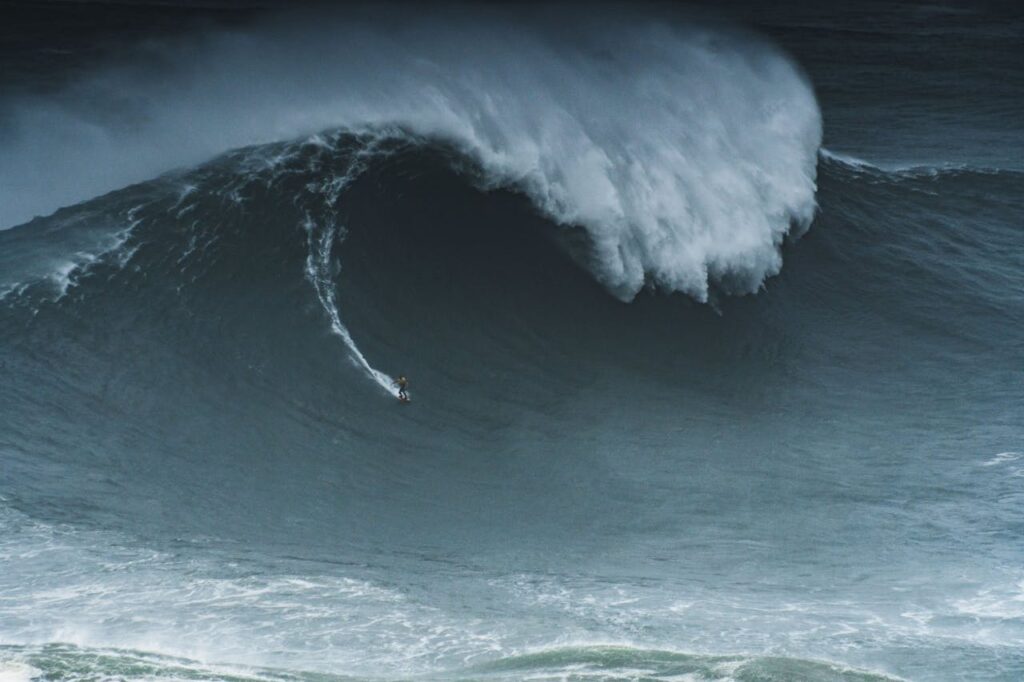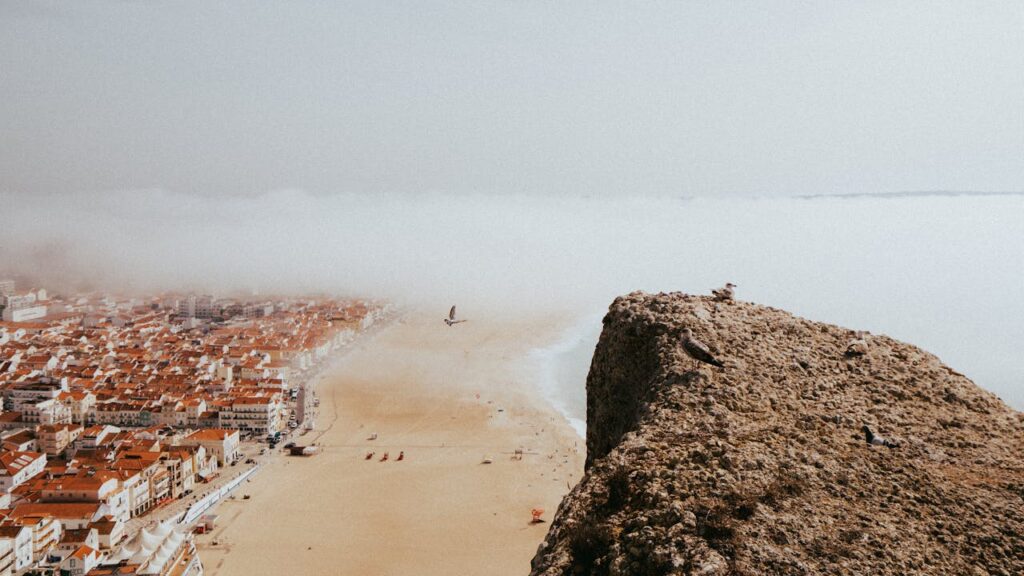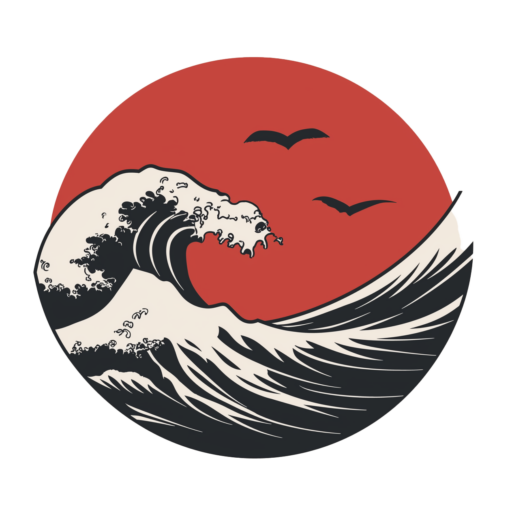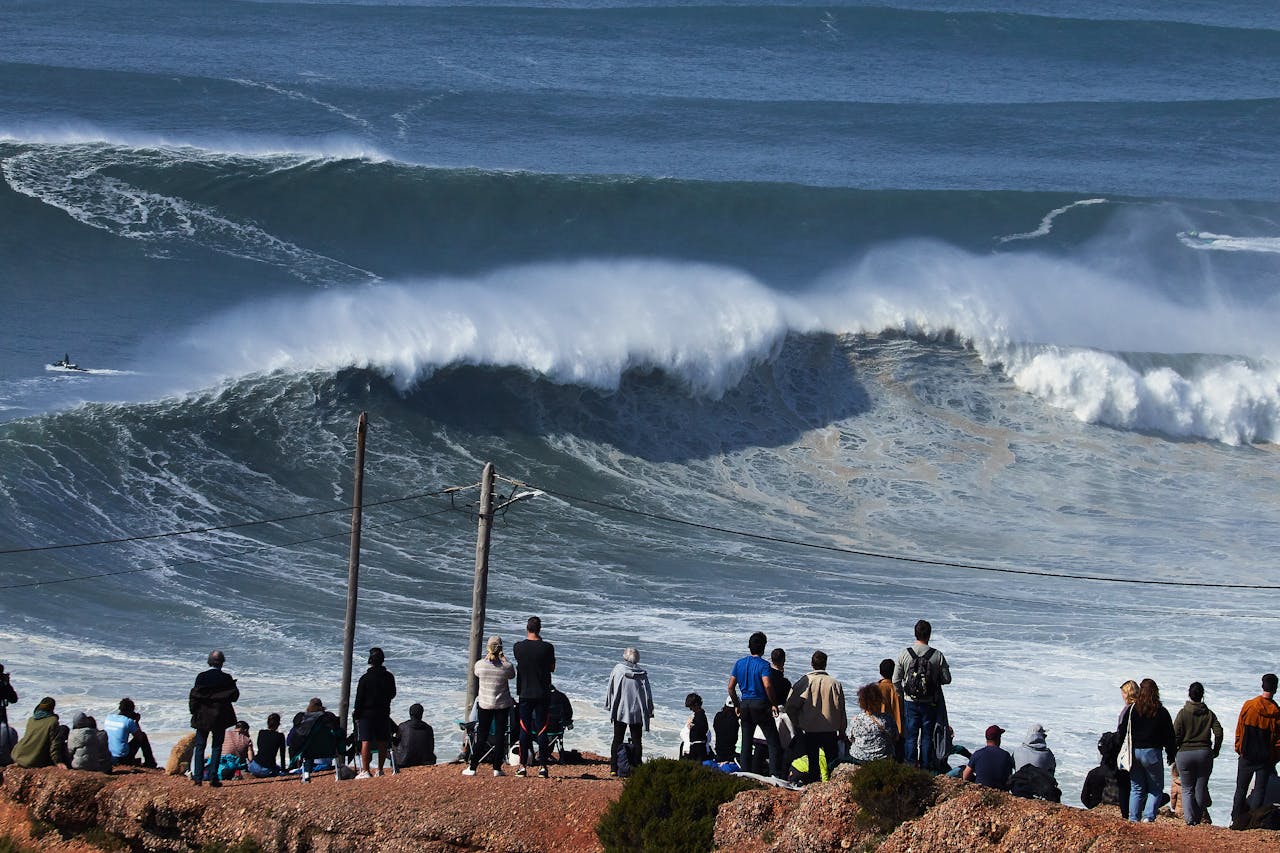In the dim light of an approaching Atlantic dawn, the small town of Nazaré had yet to rouse from its slumber. Yet, I found myself standing on the cliff of a place the locals call Sítio, where the land juts into the sea. The waves below were a constant presence, their mighty roars a part of the daily rhythm for generations. As an old fisherman reflecting on these times, I often wonder if those who came to witness the colossal swells had any inkling of the history beneath them or the future they unknowingly helped shape.
Our sleepy village was renowned for its sardines, not its waves. The lighthouse at Praia do Norte didn’t signal adventurous surfers but guided our fishing boats through fog and storm. The ocean was chiefly seen as a provider. Yet, there was always something monumental about Nazaré’s waves in the winter, breaking with an untamable force that even seasoned fishermen respected.

I remember vividly when this hidden treasure began to lure curious eyes. Initially, it was a gentle curiosity—an occasional wanderer inquiring if the tales of gigantic waves were true. Slowly, whispers became rumors, leading to a new reality. Our sanctuary of simplicity was on the brink of being exposed to the world. We were on the cusp of a revolution.
The Rise of Big Wave Surfing
Today’s reality paints a different picture. The once-quiet cliffs of Sítio now echo with the crowd’s gasps and cheers, watching surfers—modern-day gladiators—tackle waves that rise like liquid skyscrapers. Nazaré’s rhythm has evolved into the thundering heartbeat of the big wave surfing scene.
The story of big wave surfing at Nazaré is about discovery, ambition, and transformation. When Garrett McNamara surfed a 78-foot monster wave in 2011, Nazaré became the hub of big wave surfing. It was not just a location—it was the Everest of water, and everyone wanted to conquer it.

This sparked an evolution in surfing technology and techniques. Tow-in surfing, rejuvenated here, saw jet skis as the knights of the sea, offering access and safety. Surfboards morphed into reinforced giants, capable of enduring the immense pressure of massive waves.
Nazaré symbolizes human ingenuity and the relentless pursuit of boundaries. It’s become a global icon, shifting big wave surfing paradigms and drawing tourists by the thousands, eager to witness the mythical waves firsthand.
The Economic and Cultural Impact
This transformation brings both growth and challenges. Tourism has invigorated Nazaré, shifting it from a quiet fishing village to a bustling hub. New hotels and businesses catering to surf enthusiasts offer jobs and opportunities. However, this comes at a cost. The charm of our tight-knit community is at risk, threatened by commercialization looming as progress.

The emotional impact resonates deeply. For those who remember quieter times, there’s a bittersweet sense of loss. The waves, once symbols of peace, have become a stage for spectacle. Local youth now dream of surfboards instead of fishing boats, transformed as much as the landscape around them.
Surfers face existential questions with each monstrous wave. These waves possess a magnetic allure, urging them to seize the moment. The danger is real, as is the glory. To ride Nazaré’s giants is to engage with nature at its most powerful, a peak few dare to reach.
From my viewpoint, as one who has witnessed this transformation firsthand, the evolution of big wave surfing in Nazaré is double-edged. The allure is undeniable, but so is the temptation to commodify it. There’s beauty in sharing our wonders, but we must prioritize preservation over profit.
The surf community must balance adventure with respect for the ocean, navigating fame and commercialization carefully. The waves should not become mere commodities for cameras but remain a testament to nature’s sublime power and human spirit’s audacity.
It’s vital for visitors, whether surfers or spectators, to honor Nazaré’s legacy—respect its culture and people. We must foster an environment where innovation and tradition coexist, preserving the soul of a place that has harmonized with nature for centuries.
Conclusion
Standing again on the cliffs, watching waves dance against the shore, I see reflections of both past and future. Nazaré’s story is one of resilience and adaptation, navigating change with courage. While the world may come to ride its giants, it’s our duty to remember and preserve our origins’ quiet dignity.
The waves will continue their eternal dialogue with the coast, indifferent to human ambition. As the sun sets over this ancient land, casting golden light upon the sea, I feel profound gratitude. Nazaré is more than its waves; it’s a cradle of community, a tapestry of stories, and a legacy that demands reverence and respect.
In riding giants, we must remember to cherish the ground we stand on. By doing so, we ensure Nazaré’s story is not only about change but enduring beauty.

